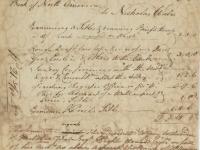The fundamental economic problem of scarcity and the basic principle of opportunity cost were both understood by our nation’s founding generation.
For example, Benjamin Franklin understood both concepts well when he suggested that “A penny saved is two pence clear” ... which is not the same as his popular misquote: “A penny saved is a penny earned.” As was cleverly pointed out in Blaine McCormick and Burton Folsom’s opinion article in Forbes, Franklin was not equating saving to earning; instead his lesson is precisely about “opportunity cost” – the basic idea that every decision comes at the cost of the next best option. Spending money on a new house, for example, comes at the cost of the next best opportunity, and depending on one’s situation, perhaps one might save or invest that money instead
With the complexities of today’s financial headlines, referencing synthetic credit default swaps and sub-prime mortgages, students need a way to begin to understand these concepts. With the resources in this lesson, perhaps they can start with primary sources relating to our country’s first bank and the various types of transactions that occurred there, as well as the opportunity-cost based accounting that took place there.

